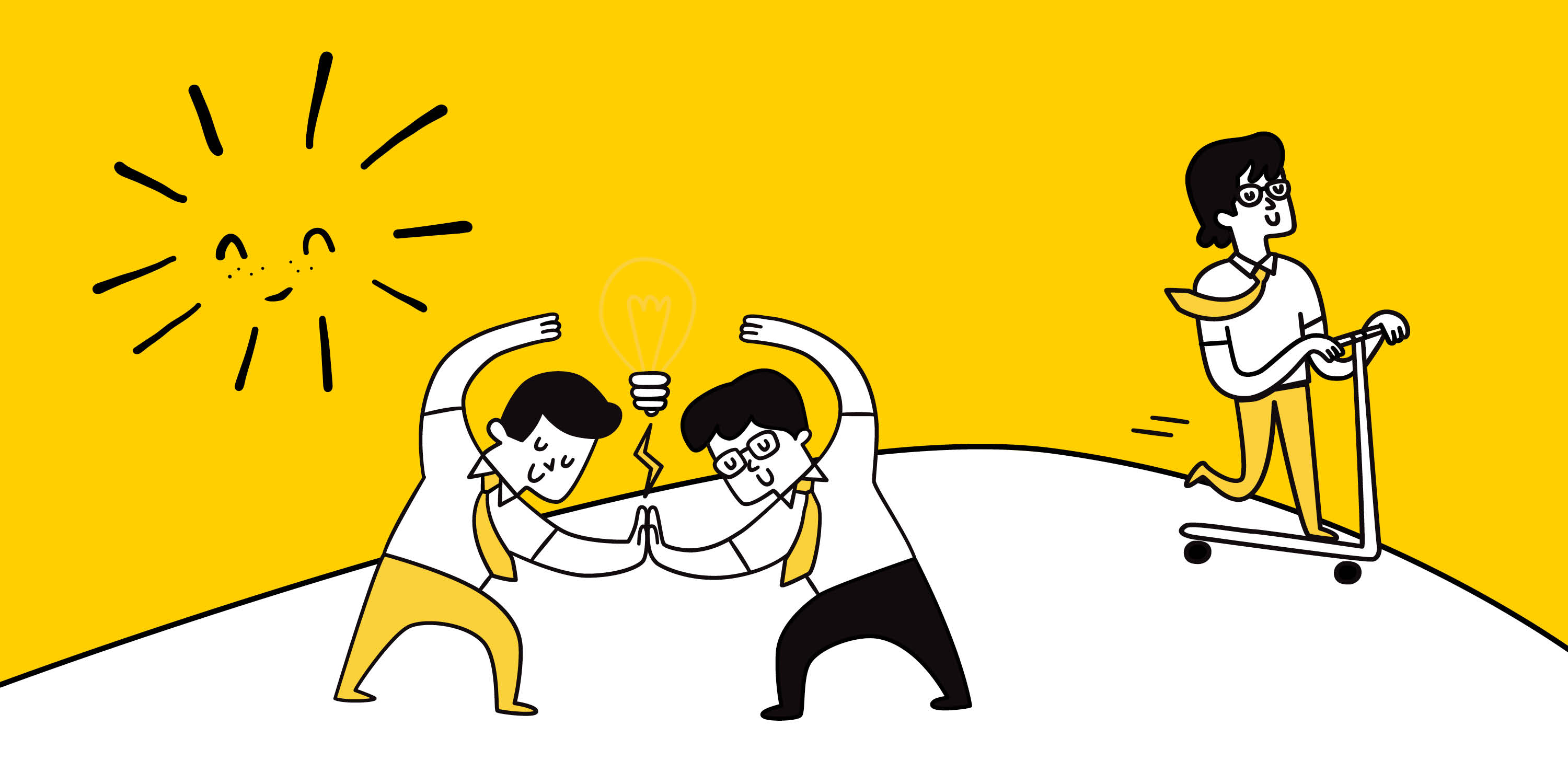
Take Two: Managing Mental Health at Work
Mental health days. Lunchtime yoga breaks. Flexible work schedules. Strategies to bolster employees’ well-being are finding a home in the workplace. But how do managers create an authentic, open culture? Corporate wellness coach Franchon Francees ’05 and Assistant Management Professor Brandon Smit weigh in on trends and strategies for making mental health well-being a priority.
What have you seen as effective strategies around mental health?
BRANDON SMIT: One place to start is the culture of the company. Ask yourself if you’re specifically creating a supportive culture that values and prioritizes mental health. A case in point: encouraging worklife balance by setting clear boundaries for work hours or offering flexible work schedules. It’s important that employees’ direct managers are on board, though: If employees are receiving mixed messages from top leadership and their supervisors, the program will fall apart.
 FRANCHON FRANCEES: I advocate for zeroing in on the mid-level manager mindset, particularly emphasizing authentic leadership and radical transparency. In conversations with employees, I hear that managers aren’t listening and they’re micromanaging. And given that a manager is basically responsible for whether an employee can afford to feed their family, fear can impact that employee’s ability to advocate for themselves. So, I focus on encouraging managers to create a safe space to listen to employees versus immediately jumping in to fix a problem.
FRANCHON FRANCEES: I advocate for zeroing in on the mid-level manager mindset, particularly emphasizing authentic leadership and radical transparency. In conversations with employees, I hear that managers aren’t listening and they’re micromanaging. And given that a manager is basically responsible for whether an employee can afford to feed their family, fear can impact that employee’s ability to advocate for themselves. So, I focus on encouraging managers to create a safe space to listen to employees versus immediately jumping in to fix a problem.
BS: Most managers aren’t trained mental health professionals, but they can offer empathy and refer employees to resources. That transparency and authenticity piece comes in when managers open up and share their own challenges in an appropriate way; it humanizes them and makes them more approachable. Employee wellness programs vary — disconnecting from the workplace vs. relationship-building.
Does one approach work better?
FF: Relationship-building and connection should always be a priority for managers because everybody is different, and, if you’re not connected to your people, you don’t know what they want and how to take care of them. Is it yoga, a day trip, skydiving? Diversity is good so you’re not forcing everybody to do wellness or do mental health in a certain way.
BS: If you solicit employees’ participation and feedback to customize programming toward the workforce, it becomes a culture-building event; you’re creating this spirit of collaboration and concern.
A Short Week
Bentley University-Gallup Business in Society survey found that 77% of Americans believe that a four-day, 40-hour workweek option would have a positive effect on their well-being.
Regarding an employer’s responsibility around mental health, are there different expectations among the generations?
BS: Gen Z is almost four times as likely to report feeling depressed by their job at least weekly compared to baby boomers, probably because mental health challenges are becoming less stigmatized. They’re also more accepting of other people experiencing mental health problems. It’s not surprising, then, that Gen Z has higher expectations of their employer.
FF: I’m hearing that each generation wants to be valued in different ways. For example, one generation may need more time off, another may need flexibility, and another just wants to be seen and validated either privately or publicly. That diversity of needs can be challenging for managers. I advise finding common ground and building on that.
Are there differences in how corporations and nonprofits approach mental health?
FF: I’ve noticed that nonprofits will get funding for specific projects, and they are quicker to allocate it to wellness and investing in their employees. For corporations it’s often more of a value decision: They have the money and it’s a question of whether to allocate it to wellness and mental health.
BS: On the corporate side, you see more of a return-on-investment mindset: If we fund these wellness initiatives, for example, we might see absences go down by this much. Sometimes, though, it’s hard to put a metric on it.
FF: I agree. Most leaders who contact me do it because they care about people — they want to change the work culture but don’t know how. It’s a win when they implement recommendations, even when we can’t measure it with numbers. What are your top three best practices to safeguard mental health in the workplace?
FF: Number one: Listen; people need to be seen and heard. Second, hire the right person for the team. Don’t scoff at soft skills; they aren’t optional for supervisors and aren’t easy to cultivate like technical skills are. Third, acknowledge when you’ve made a mistake. Apologize, commit to fixing it — and then actually do it.
BS: My recommendations focus on individual maintenance and prevention: Get enough sleep to help ensure you’re ready to cope with work demands. Meditation can also help reduce anxiety and manage stress. Taking care of yourself goes a long way toward improving mental health.
Meet the Experts

Franchon Francees is a licensed clinical mental health counselor and certified trauma practitioner and trainer. In 2019, she founded Healing Your Almond, a consulting group to help companies address employee stress and team efficiency, particularly through authentic conversations. As an enrolled member of the Cheyenne River Sioux Tribe, she applies an Afro-indigenous lens to her work.

Brandon Smit is an assistant professor of Management at Bentley. His research focuses on employee stress, well-being and work-life balance. Most recently, he has explored how employees can effectively use flexible work arrangements, as well as the hidden costs that come with working flexibly, such as increased pressure to stay connected to work and burnout.

